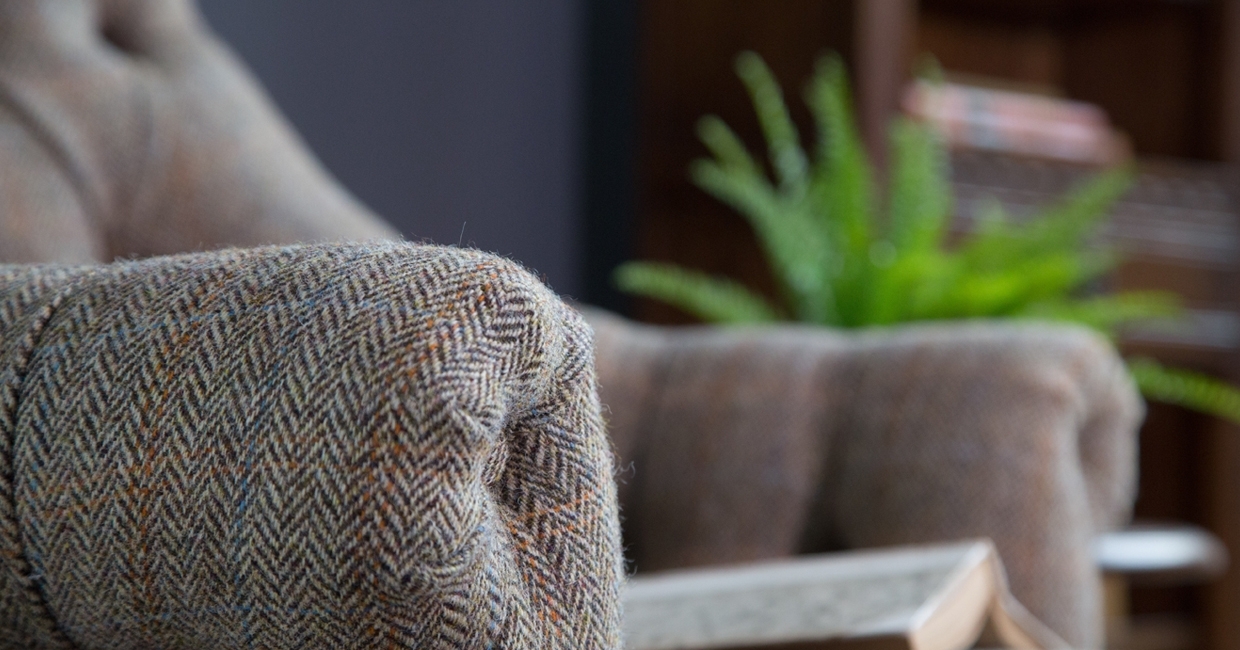Upholstery in the year ahead is set to embrace a new mood for more informal and relaxed living, according to British Furniture Manufacturers’ (BFM) members, who were out in force at this year’s January Furniture Show, with a record 49 members exhibiting. In this special report, Furniture News discovers the thinking behind the developing seating trends …
This dominant trend for casual comfort was repeatedly reinforced at the event through muted colours and tactile fabrics, while understated grey and pastel shades are expected to maintain their hold on decor during 2018. Luxurious velvets and super-soft ‘touchy-feely’ fabrics remain top choices, too.
“The upholstery sector is all about 50 shades of grey at the moment,” says Karl Walker, MD of Lebus Upholstery. “Texture is also key, with soft fabrics being the ultimate choice for many of our customers.”
Suzanne O’Flynn, MD of John Sankey, agrees: “Customers have been looking for something special,” she says, “with quality, attention to detail and lasting comfort at the top of their agendas.”
According to Tom White, design director at Parker Knoll, consumers want a more casual approach to fabrics and colours - specifically soft, chalky pastel tones. Tom says that people are looking for a less formal, easy way of living, that offers deep comfort – and for Nick Murphy at Tetrad, this concept is about delivering “an organic, rather than contrived, look”.
For Collins & Hayes, newly acquired by Sofa Brands International, it is all about casual style, understated luxury and sublime comfort. According to Meisha-Grace Nicely, head of marketing: “Everything is becoming a lot more casual – comfort and quality remain key.”
Harris Tweed also appears to be gaining traction. Comments Nick Murphy of Tetrad: “Following the success of our Harris Tweed collection over the past five years, we’ve expanded the range to meet the increase in demand.”
Wood Bros launched tweed as a new feature on its accent chairs. “It’s a major look at the moment because it’s so visually stunning, impactful and very tactile – it can be seen on the catwalk as well as in the home,” says MD James Sheffield. “There’s a big demand for it, with a broad appeal across age groups spanning from 30-70 years.”
So could the popularity of such a quintessentially British product be a reflection of a nation’s reinvigorated sense of national pride? Certainly, many BFM members at the show see being British as a positive marketing tool for 2018, particularly with consumer uncertainty surrounding Brexit.
Nichola Bell, sales director at Westbridge, comments: “We’ve seen that British-made is important to our customers, with an increase in appetite from both retailers and consumers wanting to know where their products are being made.”
Parker Knoll’s Tom White adds: “Brands such as ours are instantly recognised as being British, and while the heritage and reputation implicit in that play a part in buying decisions, it is still important to deliver great products.”
While not everyone feels that flying the flag is a panacea to a toughening economic climate, those who do are united in their belief that British-made can be a major plus, both at home and overseas - particularly in the home market, where exchange rates are now working in favour of British, rather than imported, goods.
On the flip side, the current exchange rates are also cited as being among the current trading challenges faced by British manufacturers, having a direct and often significant impact on the price of imported raw materials.
And it is widely held that innovation and differentiation are key to surviving any economic storm.
Says Wood Bros’ James Sheffield: “If you don’t innovate and offer the market something that stands out, then it comes down to price, which inevitably leads to a price war. Opportunity for us is about extending our offer and hitting a range of different price points in the market without diluting the brand.”
Added value was another recurring theme.
“Winners for us are collections which demonstrate added value,” says Westbridge’s Nichola Bell. “People are still happy to spend money, but they need to see the value – to see and feel what they are getting for their money – perhaps the size, superior fillings, or beautiful fabrics.”
Another clear trend noted by Westbridge and others is the rising interest in more compact furniture for shrinking room sizes in the new-build sector - along with the growth of apartment living.
Chris Fort of Sherborne Upholstery comments: “One problem we’ve noticed with corner group sofas is that the corner section itself can be awkward to manoeuvre into houses, flats and rooms. With that in mind, we’ve designed a corner section which comes in two parts.
“One section is delivered fully assembled, but retailers can easily remove one part for delivery purposes, then simply link it back together again when in position. The whole corner group is supplied in four separate sections to form either a left- or right-handed corner group, and on the reclining corner group the sections with reclining actions also have removable backs, for ease of delivery.”
In the end, doing well in business is about producing strong products which meet the mood and needs of the time, offer the consumer something a little different, and do so at a fair price.
Says Tetrad’s Nick Murphy: “The public is so much more demanding and knowledgeable now, and they want more choice. That doesn’t always mean reinventing the wheel – it means ringing the changes with fabrics and treatments within collections.”
Jackie Bazeley, MD of the BFM, agrees that changing consumer tastes are creating an increasingly challenging market. “It is precisely because consumers are so much more discerning that the BFM has launched its Association Code of Practice (ACOP), in order to reassure them that member products are sure, safe and trusted.
“By signing up, manufacturing members and potential members have an opportunity to become BFM Approved Members. This certifies that the company produces at least 50% of its products in the UK and conforms to the range of UK legal, fiscal and regulatory requirements as a minimum.
“In tandem with this, and reflecting the renewed appetite for buying British, our Great British Furniture (GBF) campaign, which was first introduced some 10 years ago, is being relaunched. Approved Members are free to use GBF PoS material to promote products made in the UK.”










